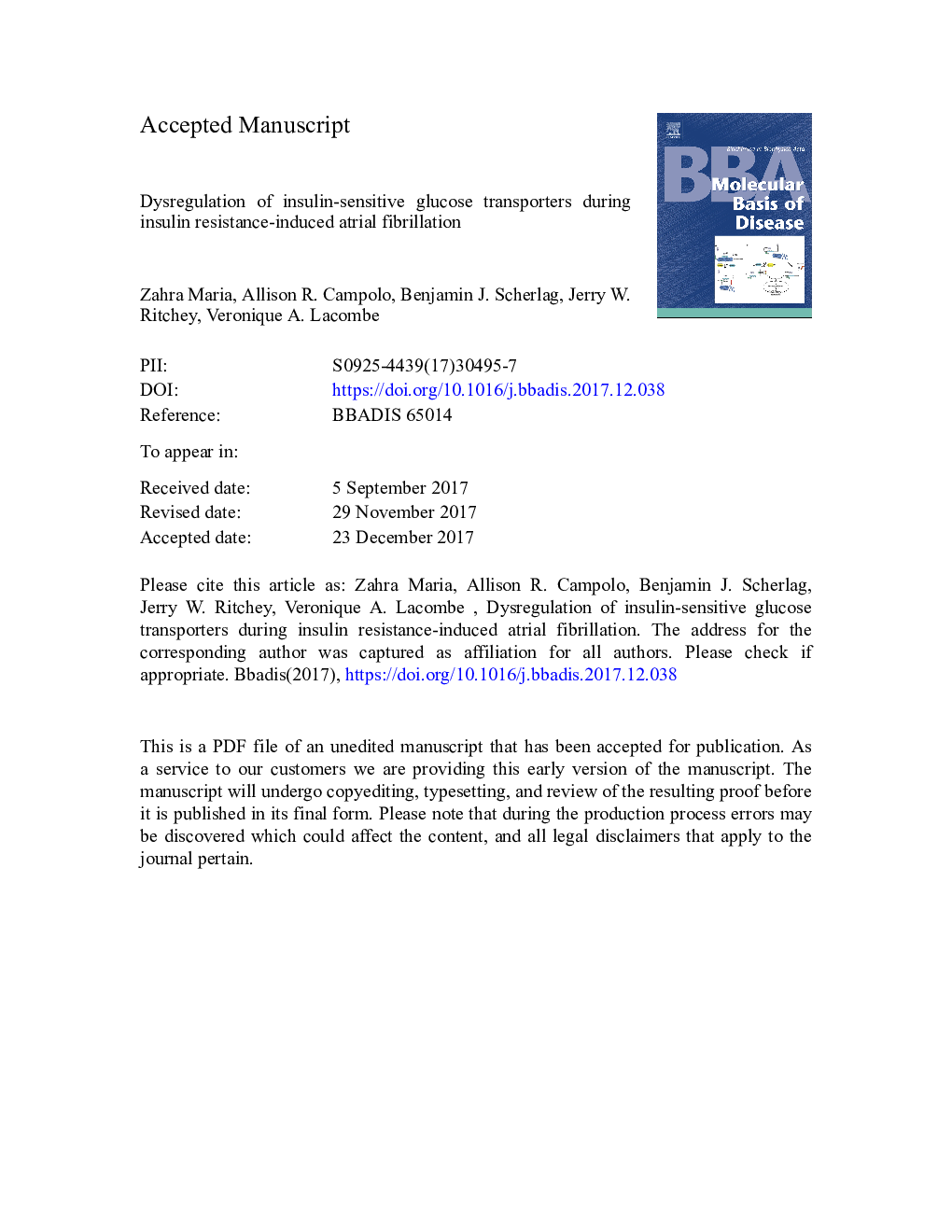| Article ID | Journal | Published Year | Pages | File Type |
|---|---|---|---|---|
| 8258562 | Biochimica et Biophysica Acta (BBA) - Molecular Basis of Disease | 2018 | 38 Pages |
Abstract
AF was induced by transesophageal atrial pacing in healthy mice and following a long-term high-fat-diet-induced insulin resistance. Active cell surface GLUT content was measured using the biotinylated photolabeling assay in the intact perfused heart. Atrial fibrosis, advanced glycation end products (AGEs) and glycogen were measured in the atria using histological analyses. Animals fed a high-fat-diet were obese and mildly hyperglycemic, and developed insulin resistance compared to controls. Insulin-resistant (IR) animals demonstrated an increased vulnerability to induced AF, as well as spontaneous AF. Insulin-stimulated translocation of GLUT4 and GLUT8 was down-regulated in the atria of IR animals, as well as their total protein expression. We also reported the absence of fibrosis, glycogen and AGE accumulation in the atria of IR animals. In the absence of structural remodeling and atrial fibrosis, these data suggest that insulin signaling dysregulation, resulting in impaired glucose transport in the atria, could provide a metabolic arrhythmogenic substrate and be a novel early pathogenic factor of AF.
Keywords
TGFβ-1MMP-9HFDGLUTIPITTIPGTTArrhythmiasintraperitoneal insulin tolerance testintraperitoneal glucose tolerance testLabeledDiabetesTransforming growth factor beta-1glucose transportersHigh fat dietAgeAtrial fibrillationHeartMatrix metalloproteinase-9MetabolismAdvanced glycation end productsInsulin resistanceCalsequestrin
Related Topics
Life Sciences
Biochemistry, Genetics and Molecular Biology
Ageing
Authors
Zahra Maria, Allison R. Campolo, Benjamin J. Scherlag, Jerry W. Ritchey, Véronique A. Lacombe,
